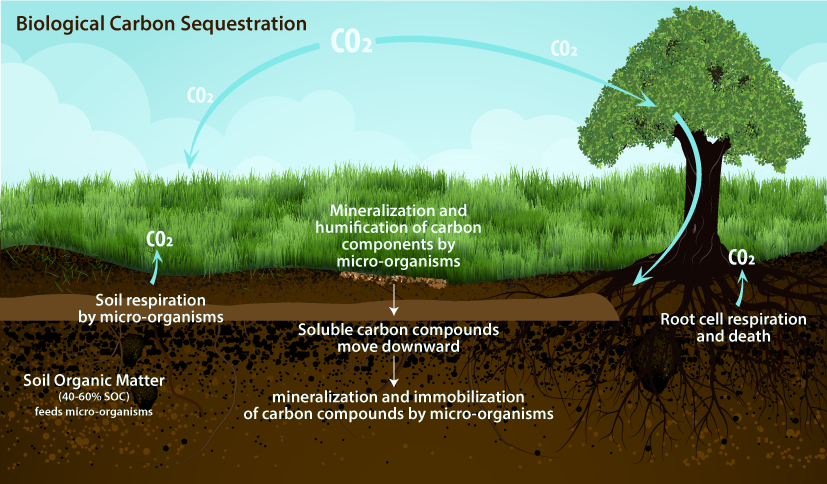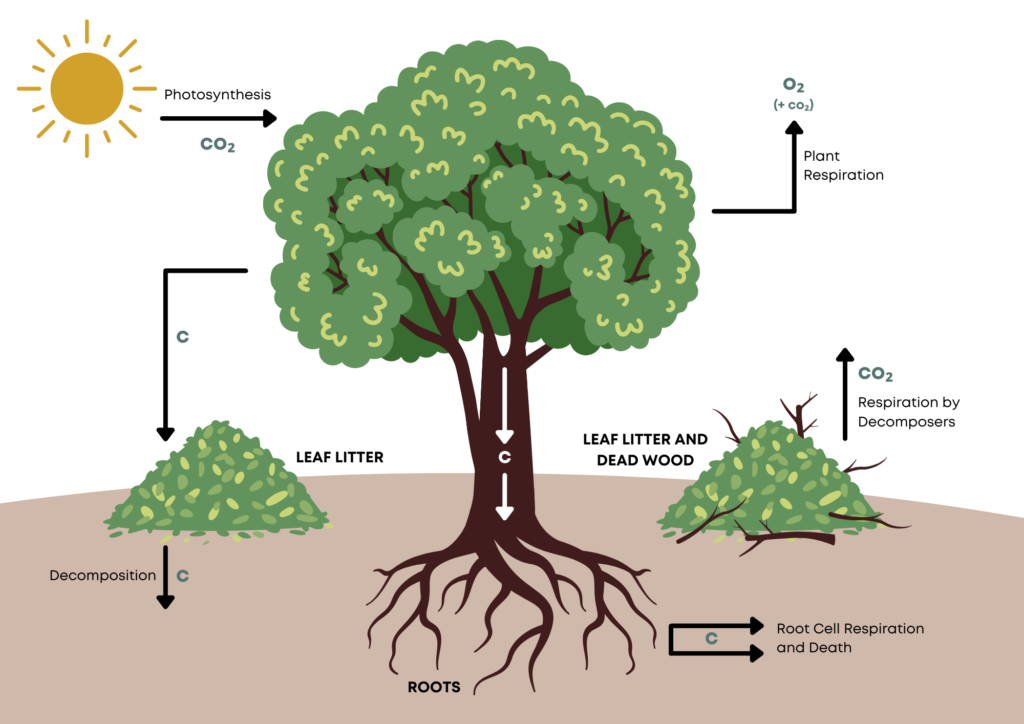Carbon sequestration captures carbon dioxide (CO2) from the atmosphere and stores it in a biological medium such as soil, or underground in rock formations. Carbon sequestration is a naturally occurring process, but there are also efforts underway to capture CO2 through artificial methods to help mitigate climate change.
“If enough carbon is sequestered,” the U.S. Forest Service explains, “the greenhouse effect will be reduced in the future, resulting in fewer warmer days as well as less occurrence of drought and other extreme weather cycles.” Yet that’s not the only benefit, at least from three naturally-occurring means of carbon sequestration: soil, forests, and grasslands.
Soil Carbon Sequestration
“Soil carbon sequestration,” American University explains, “helps restore degraded soils, which can improve agricultural productivity.” Healthier soils are also more resilient against drought and flooding. Because healthier soils need less fertilizer, soil carbon sequestration can also save farmers money while reducing the environmental impacts of commercial fertilizers.
Today, soil holds three times the amount of carbon that’s in the atmosphere. However, many cultivated soils have lost 50% to 70% of their organic matter. A recent estimate claims that soil carbon sequestration could be scaled up to sequester 2 to 5 billion tonnes of carbon dioxide (GtCO2) by 2050. One tonne alone equals 1,000 kilograms (kg) or 2.204.6 pounds.
There’s plenty of room to sequester carbon in soils but the fact remains that soils can hold only a finite amount of carbon. Other biological methods of carbon sequestration are available, but the best naturally-occurring method might surprise you.
Forest Carbon Sequestration
Forests play a major role in carbon sequestration. Through photosynthesis, trees absorb CO2 from the atmosphere, convert it into organic carbon compounds, and store this carbon in their woody biomass and leaves. This stored carbon is then released back into the atmosphere through processes like respiration, decay, and combustion.
Forests are natural carbon sinks because they absorb more CO2 than they release. In fact, they consume about 25% of the CO2 pollution produced by humans worldwide, UC Davis explains. However, the risk of forest fire can be great because of warming temperatures, drought, and forestry management practices that avoid the clearing of underbrush.
The wildfires that have plagued California in recent years demonstrate how forests can become carbon sources instead of carbon sinks. Fortunately, there’s another naturally-occurring means of carbon sequestration available: the grasslands that cover 40% of our planet, and that thrive in semi-arid environments.
Grasslands Sequestration
Like forests, grasslands use photosynthesis to absorb CO2 from the atmosphere. However, most of the CO2 that grasslands sequester is stored underground. This means that even when fire burns grasslands, some is released from the grass but most of the carbon remains underground in the plant’s roots and soil. Compared to forests, grasslands are also more resistant to drought.
“In a stable climate, trees store more carbon than grasslands,” says UC Davis’ Benjamin Houlton. But that’s not the climate we have with today’s droughts, wildfires, rising temperatures, and extreme weather events. “Looking ahead”, explains UC Davis’ Pawlok Dass, “our model simulations show that grasslands store more carbon than forests”.


